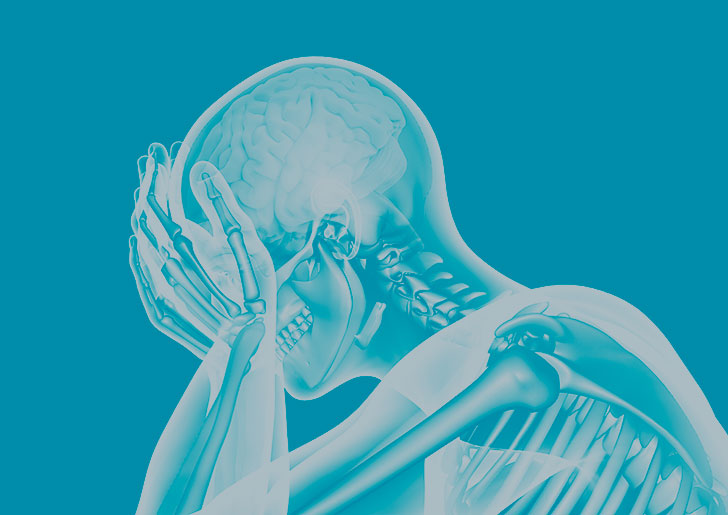
Chronic Traumatic Encephalopathy (CTE) Tops List of NCAA Concussion Injuries
There are known risks for athletes playing in college for the NCAA. Knee and shoulder injuries, bone fractures, and contusions are commonplace. Brain trauma, however, is a very serious issue, and Chronic Traumatic Encephalopathy (CTE) tops the list of NCAA concussion injuries. This progressive neurodegenerative disease usually affects athletes who’ve sustained multiple concussions. In particular, CTE affects players who suffer another concussion before their brain properly heals from an existing one. CTE is a form of brain damage that can lead players to contemplate suicide as well as other harmful behaviors. Worse, CTE symptoms typically appear long after athletes hang up their uniforms — including memory loss, depression and dementia.
The Dangers of CTE
CTE is most commonly diagnosed in people who play contact sports (football, basketball, hockey, boxing) or were injured in combat during military service. Football in particular has been studied extensively, since a staggering number of former players have been diagnosed with CTE. This type of brain damage persists over a period of years and on into decades, and it’s the direct result of repeated traumatic head blows. Concussions extend the length of neurons and axons in the brain, stretching them out until they’re strained. But these neurons and axons can only be stretched hard once before they snap. When these electrical impulse conductors finally do rupture, fibrous balls of protein form within the brain’s pathways that handle communication and cognitive functioning. These fibrous balls are also known as tau protein, and they typically help stabilize the cellular structure in neurons. But when they’re stretched and become defective, it majorly interferes with normal neuron functionality. This tau protein forms scars in the brain — and that scarring is a hallmark symptom of CTE. Currently, CTE can only be positively identified in a patient post-mortem. However, common CTE signs and symptoms can easily be identified while an undiagnosed sufferer is still alive, including:
- Headaches
- Dizziness
- Memory loss
- Dementia
- Impulse control
- Depression
- Suicidal thoughts
- Fatigue
- Trouble sleeping
- Irritability
- Neck or cervical spine arthritis
- Anxiety
- Numbness/tingling
- Bipolar disorder
- PTSD
- Social phobia
- Psychosis
What Medical Studies Say about CTE
A 2012 study conducted at Boston University sheds some light on just how common CTE is among ex-athletes. Researchers divided CTE into four different stages, beginning with headaches (Stage I) and escalating to severe dementia (Stage IV). They analyzed 85 subjects who suffered repeated mild traumatic brain injury — 50 of which were former football players. In the entire group of 85, 68 subjects showed signs of CTE. The researchers state that CTE “is thought to result in executive dysfunction, memory impairment, depression and suicidality, apathy, poor impulse control, and eventually dementia.”
A 2014 study by Boston University analyzed a group of 730 NCAA athletes. Researchers found that offensive linemen were significantly more likely to experience head injuries than their teammates. Even more concerning was this revelation: “Offensive linemen reported having returned to play while experiencing symptoms more frequently... these findings suggest that offensive linemen, a position group that experiences frequent, but low-magnitude, head impacts, develop more post impact symptoms than other playing positions, but do not report these symptoms as a concussion.” Notably, researchers also believe that CTE can be triggered by repetitive mild traumatic brain injuries. Repeated mild concussions sustained before the first one completely heals can be far more devastating than 1-2 extreme head blows.
CTE and Suicide
Suicide is perhaps the most devastating concern for those suffering from CTE. Because symptoms can cause extreme mood disorders, including depression, violence, and anger, suicide poses a real risk. In that same 2012 Boston University study, researchers found that among 51 subjects with CTE, seven died from suicide. And six others clearly expressed suicidal intentions at some point in their lives. Autopsies revealed CTE in brains of prominent NFL players who committed suicide, including Andre Waters, Dave Duerson and Junior Seau. Andre Waters killed himself at age 44. In an interview with The Philadelphia Inquirer, Waters said of his career concussions: “I think I lost count at 15. I just wouldn’t say anything. I’d sniff some smelling salts, then go back in there.” His doctor believed that repeated brain injuries led to Waters’ depression, and eventually, his suicide.
In his own suicide note, Duerson stated, “Please see that my brain is given to the NFL’s brain bank.” And Seau famously shot himself in the chest, perhaps in an effort to preserve his brain for later medical analysis. Seau’s ex-wife Gina said, “I think it’s important for everyone to know that Junior did indeed suffer from C.T.E. … It’s important that we take steps to help these players.” Unfortunately, little has been done by the NCAA to protect their athletes. As a result, former college athletes are filing lawsuits seeking damages for injuries sustained from mishandled concussions. These athletes claim their injuries were not properly treated, nor did they have the chance to heal completely before returning to active play.
If you or a loved one played NCAA sports between 1959 and 2016, sustained at least one concussion and later developed a neurodegenerative brain disease, you may be eligible for a cash settlement.